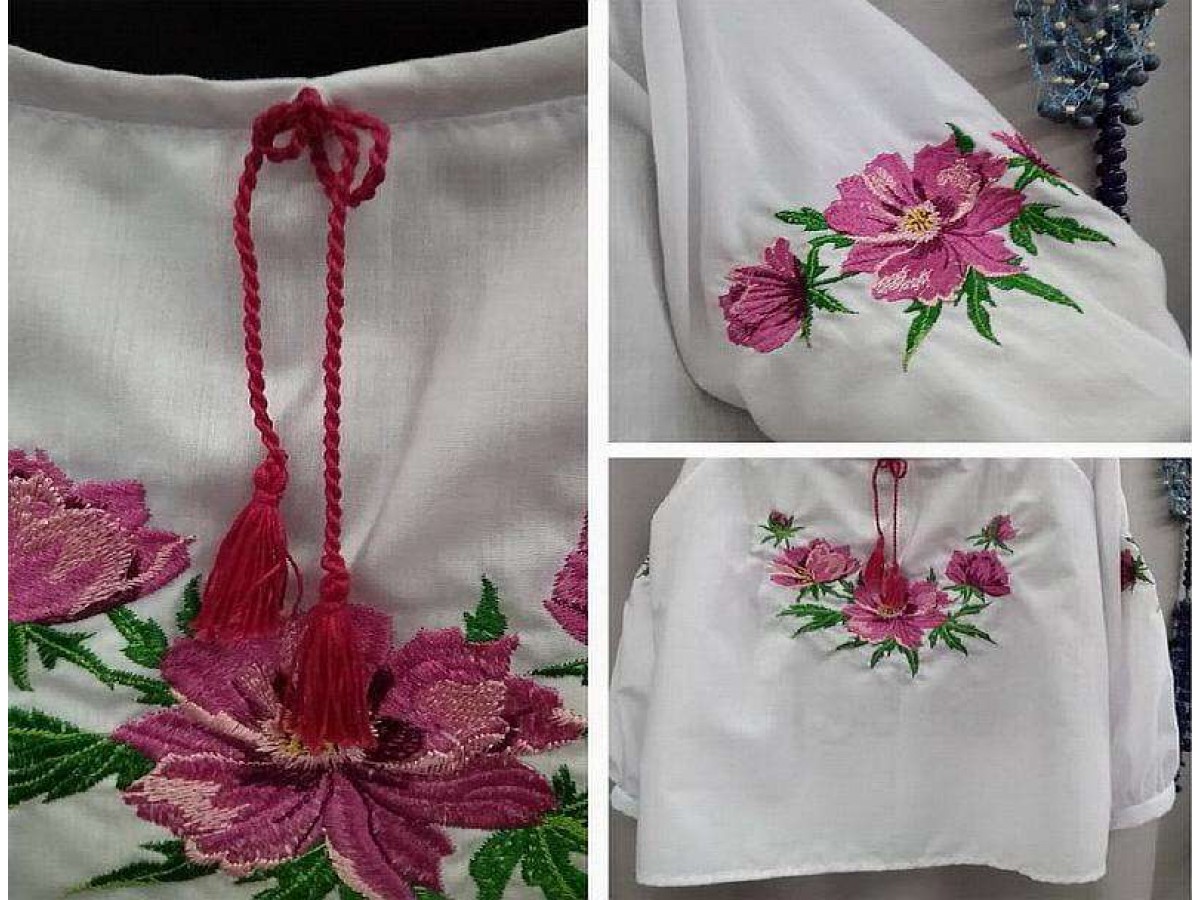The form remained, but the content ... It seems that the tradition of decorating the upper part of the sleeve with embroidery has been preserved, only instead of sacred motifs we have bouquets of roses of French origin, the so-called "brocade embroidery", about which Olena Pchilka wrote that "our Ukrainian style is beginning to deteriorate, be distorted and instead of ancient patterns ... you can see a terrible slapstick, some impossible roses, variegated teeth, and all this cuts the eyes and makes the sleeve ... a piece of Moscow calico of the most ridiculous taste." This is from the preface to the 4th edition of "Ukrainian Patterns", the first edition is from 1878. And the professor of St. Volodymyr University (now named after Shevchenko) Hryhoriy Pavlutskyi published the work "History of Ukrainian Ornament" in 1927, in which he noted: "Modern widespread embroidery with a red and black cross has nothing to do with Ukrainian embroidery." And this put an end to the discussions - oh, is it ours or not ours? This is not a tradition, it is a fashion that appeared in the 20th century. somewhere at the end of the 19th century. That is, such a pan-European fashion. All ornaments have a multi-level complex system of semantics and symbols. And when we see this lush rose, it is a rose and nothing else. What can we say about her? Well, a symbol of virginity, some philosophy to catch up a bit. And from the motifs of the octagonal star, it is popularly called a "full stem" or "blooming rose" - there are so many levels, we can talk about this star from morning to night!
The five types of Ukrainians identified by Fedir Vovk in anthropology are the source from which the Ukrainian people within modern Ukraine were formed, these are five different civilizations. Five civilizations and five colors. Also, these five colors are in the Mayan calendar system, where it is correlated with the cardinal directions: red - east, blue - west, white - north, yellow - south. The center is a green color, auxiliary. As an independent color, it is also present in many nations, and it is also present in our Ukrainian embroidery, the color of the Holy Spirit, the color of the center of the galaxy and the synthesis of the energies of nature. Red - beginning, impulse, initiation, fire. White - water, accumulation. Blue - air, transformation. Yellow - earth, result. And green is the center of the galaxy, the cosmic Christ, the holy spirit, which constantly gives us corrections in the evolutionary programs of our development. That is, it is a confirmation that we are united with the whole world.
If we talk about harem pants, they are only the central or Dnieper type. When we talk about Ukrainian clothing, we should add "Ukrainian Poltava", "Ukrainian Polisky", "Ukrainian Carpathian" costume or "Ukrainian, Vinnytsia region" if taken by region, as it will be very, very different.
However, in embroidery and clothes there is also something that is peculiar to the whole of Ukraine. What unites us?
1. Using a white cloth. We did not use colored fabrics for outerwear (shirts), as well as for such ceremonial, sacred fabrics as towels. If we see the use of colored fabrics in clothes and towels by our neighbors (the Moscow Principality), then this is the influence of the traditions of the Turkic nomadic peoples, and this also does not speak in favor of the fact that the people are some kind of brother to us.
2. Honor of white embroidery. That is, embroidery with white on white is our ancient tradition, which traces the cult of the Father-creator, who is in the image of white light, sun, fire and, of course, in white color. That's why our ancestors whitewashed houses outside and inside (not only adobe houses, but even wooden ones) and bleached canvas - hemp and linen, for shirts and towels, and embroidered white on white. In order to sew linen with bleached linen threads, it was not enough to bleach these threads in one season. For three years in a row, they had to be bleached so that they would then acquire special energy properties. And then the sacred pattern, embroidered with these threads with a prayer, with a song, acquires a colossal significance. This also suggests that embroidery has not only a decorative function.



Write a comment